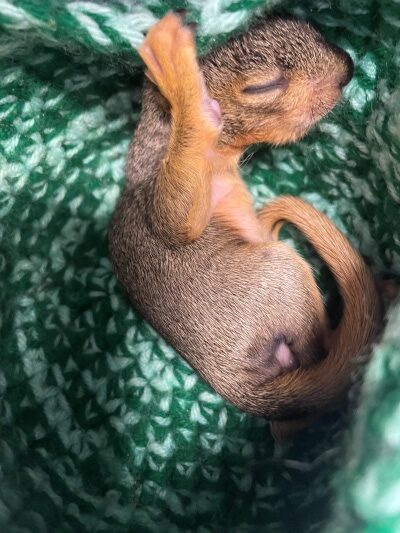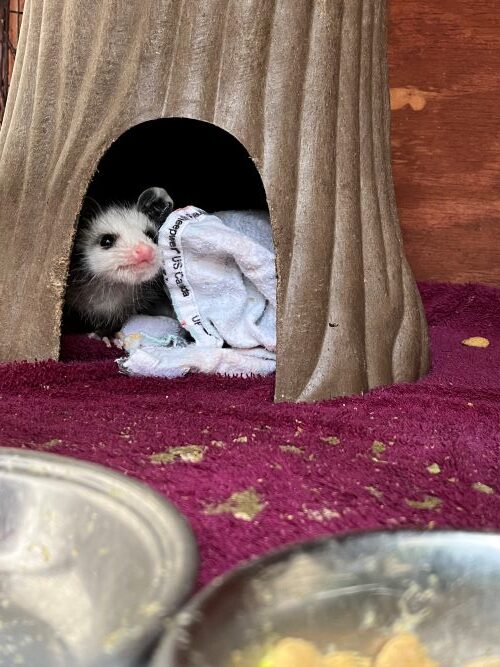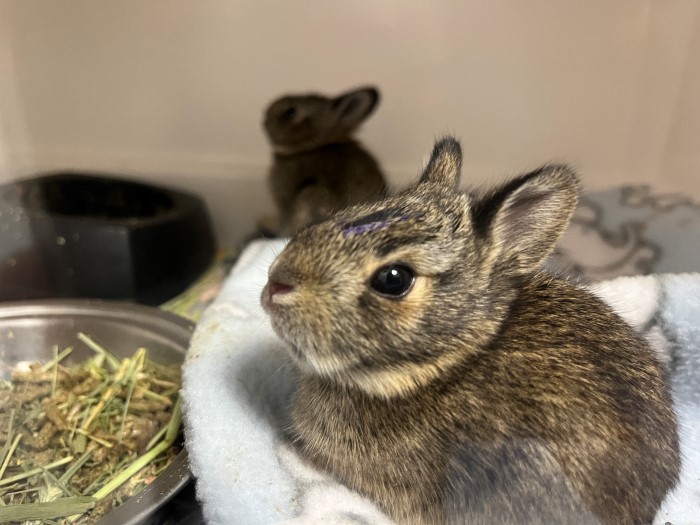Midwest Climate Change
Baby season has begun at the Wildlife Medical Clinic! Spring has sprung! But wait – isn’t it a bit early for springtime babies?

If you’ve lived in the Midwest for a while, you may have noticed that winter this year didn’t seem to fit with the snow-covered hills and icy roads many people associate with northern Midwest states. This winter has been a warm one with the National Weather Service noting that Chicago has experienced its warmest February on record with below normal precipitation and snowfall. As the entire globe experiences changes associated with global climate change, what does that mean for midwestern wildlife?
Temperatures in the Midwest have progressively gotten warmer over the last several decades with the average annual temperatures rising. While daytime temperatures are what humans tend to notice most, this change is seen most notably in nighttime and winter temperatures. The Environmental Protection Agency predicts that the Midwest will likely experience warmer wetter winters, heavy rain in the spring, and hotter summers with longer dry periods. Increases in temperature are causing ecosystem-wide impacts including increases in wind speeds. Climate change is expected to intensify storms as well. Baby squirrels and birds are often found on the ground after storms or high winds have knocked nests out of trees.
Seasonal Changes in Temperature
In many species and ecosystems, seasonal changes in temperature are cues for transition to seasonal cyclic behaviors. A phenology study performed in western New York found that frog calling dates, indicating timing of breeding, were occurring 10 to 13 days earlier in the season. A 2018 study of wolves in east-central Alaska found that wolves may be denning earlier in response to warmer weather and food availability. Another study found that tree swallows have been laying eggs progressively earlier over a period of 32 years. Some caribou populations are calving earlier. Other species, like moose, who rely on cold weather, are struggling to adapt and populations are in decline. A study at the University of Edinburgh has been collecting data on birth dates for red deer since 1972. They found that deer have been giving birth earlier since the 1980s at a rate of about 3 days per decade. They attribute this in part to warming temperatures and in part to genetics. Female red deer have one calf per year and those that reproduce earlier in the season have more offspring over their lifetime. Due to this, genes for breeding earlier have become more common over time.
Shifts in food sources due to climate change have an impact too. If the date insects hatch shifts, it affects what birds can feed their young. Changes in plant cycles impact herbivore diets. Insects and wood frogs are expected to respond quickly, and some shorebirds have already shown adaptation to earlier spring insect emergence. Bald eagles produce more young when salmon run earlier. A study in Alaska in 2018 found that there was increased nestling production associated with warmer April temperatures and another study found success to be related to early salmon season runs.
Climate Change Affects Species Differently

The needs of different species are all very different and so while these changes may be seen in some species, it is not a hard rule for every animal. Changes in climate conditions do not mean a uniform change in an animal’s ability to survive. For many wildlife species, warmer weather may mean a higher survival rate, growth rate, and/or reproductive rate. However, in areas where the temperatures are at the top of a species’ livable temperature range, there may be reduction of these rates in other locations. Species with short generation times, simple habitat requirements, and ability to move easily are more likely to succeed than those with more specific needs and limited ability to disperse to new areas. For example, we will likely see more baby squirrels this spring while species like turtles are more likely to be negatively impacted. Large migratory birds seem to be more impacted while small birds are generally adapting more effectively. While this may be a positive for some animals in the short-term, it will lead to reduced ecosystem diversity and greater susceptibility to failure overall.
What can you do?
So, with babies earlier in the season, what can the community do to be good wildlife stewards? In an ideal situation, if a baby is healthy, the best chance of survival it has is out in the wild with its parent(s). A notable percentage of baby animals brought to wildlife centers each year are from well-meaning community members who took them out of a nest and away from mom. Just because mom isn’t visible doesn’t mean she is not around: fledgling birds often have a parent watching from nearby, fawns are left alone by their mothers for hours at a time, and baby bunnies aren’t taken care of by mom until dusk or dawn. Check out the Resources tab (https://vetmed.illinois.edu/hospital/wildlife-medical-clinic/resources-wildlife-fun-facts/)of the Wildlife Medical Clinic website for species specific information about how to assess whether a baby animal truly needs help and what to do if you find an orphaned animal.
This was written by Theo, one of our Wildlife Medical Clinic volunteers (Class of 2025).
References:
https://climatechange.chicago.gov/climate-impacts/climate-impacts-midwest
https://glisaclimate.org/media/GLISA/NCA/MTIT_Biodiversity.pdf
https://abc7chicago.com/climate-change-of-hope-wildlife-invasive-species/10531271/
https://www.nps.gov/articles/000/aps-22-1-5.htm
https://www.jcu.edu.au/news/releases/2023/may/climate-change-hits-birds-birth-rates
https://www.weather.gov/lot/February_2024_Winter_2023-2024_Climate_Summaries


